#gardening with natives
Explore tagged Tumblr posts
Text


Matilija poppy (Romneya coulteri) in a friend's garden
May 19, 2024
#flowers#california native plants#matilija poppy#white flowers#poppy flower#gardening with natives#may#2024#native plants#my pics#friend plants#post
7 notes
·
View notes
Text
#tiktok#andrew_the_arborist#urban gardening#urban landscape#ecofriendly#native wildflowers#eco friendly#eco lawn#native plants#garden#gardening
100K notes
·
View notes
Text

1K notes
·
View notes
Text
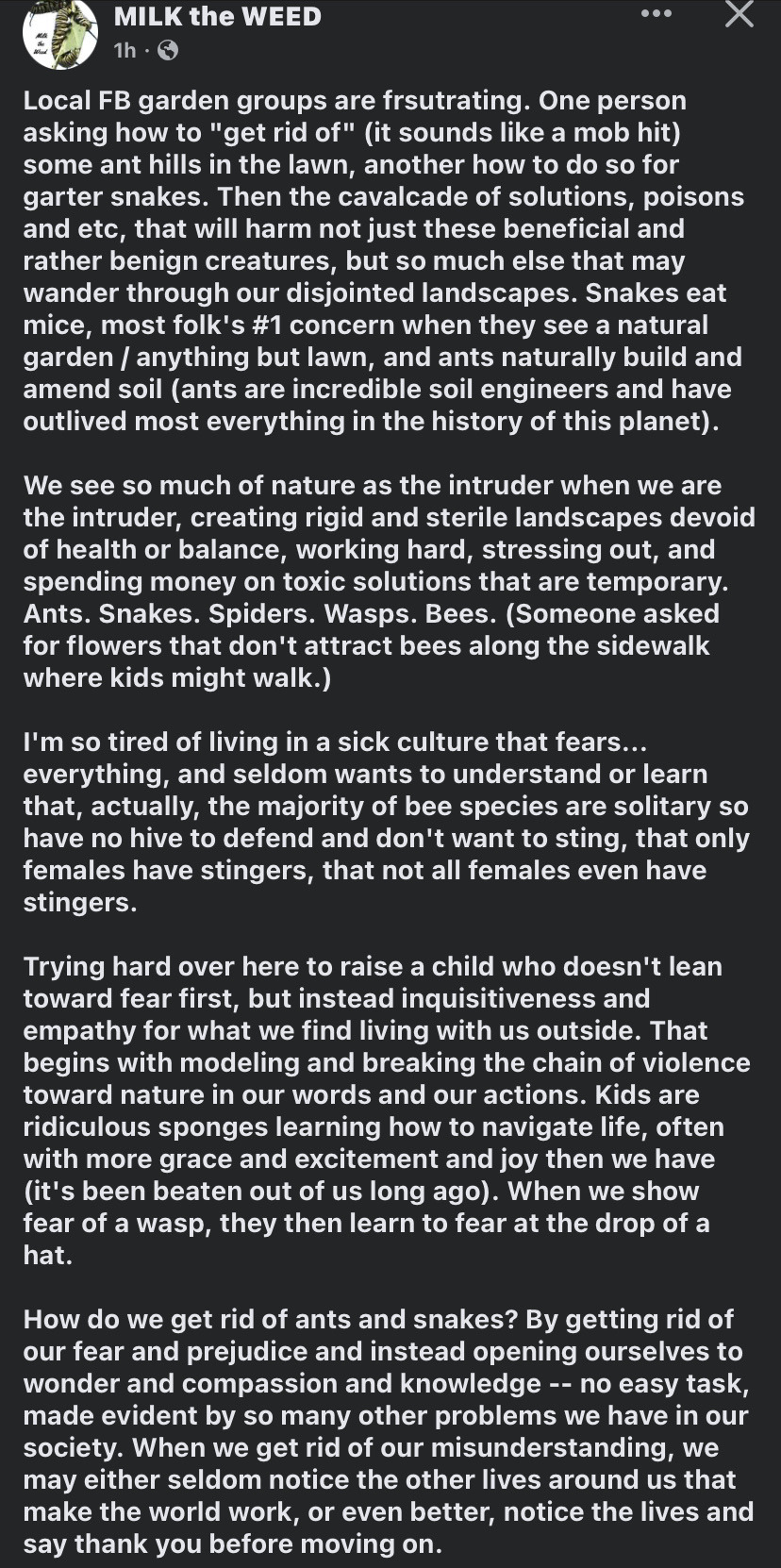
4K notes
·
View notes
Text

Why Native Plants Are Better For People And Birds:
https://www.audubon.org/plantsforbirds
1K notes
·
View notes
Text
so I found this really cool website that sells native seeds- and you might be asking me "snekdood, haven't you posted an entire list of websites that sell native wildflower seeds that you're going to add on to soon?" and yes that's true, but that's not the kind of native seed im talking about rn.
see, on my quest to find websites that sell native wildflowers, I came across this dope ass website that sells seeds that have been farmed and harvested by ntv people traditionally, i'll let the website do the talking:




so anyways this is the coolest website ever. you can find the wild relatives of chiles on here called chiltepines, you can find different colors of corn and cool squash's, and every seed from whichever farm has it's own lil origin story written about it. you can also find other veggies here that are already commercially available to help fund and support this organization. as well as there being a cool gift shop with a lot of art made by different native folk from all around as well as cookbooks, jewelry, pottery, weavings, and clearly plenty more:

as well as a pantry?? with premade soup mixes??? and i really want to try them now??????
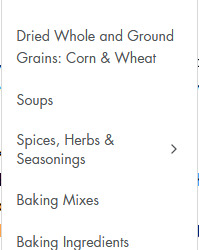
anyways I think its worth snoopin' around bc I'm almost positive you'll see something you think is cool (oh also if you happen to have some seeds passed down from ur family too and ur also native they seem like they would gladly help produce more)
#heirloom seeds#native plants#native wildflowers#native seeds#native seeds search#gardening#farming#seed conservation#heirloom vegetables#vegetables#crops#food#native american#native american traditions#native american heirloom seeds#support indigenous people#indigenous art
4K notes
·
View notes
Text
Late night wishful thinking but like
I think planting funky things around retention ponds should be more normalized!!
Like okay I get it retention ponds are meant to hold the runoff water from parking lots and drive throughs and the like so they aren’t exactly the cleanest water around. But like!!! Maybe this is different in other areas, but the only plants I ever see grow around retention ponds are cattails!! Which, like, are fine and great and dandy lets go cattails, but like
Where’s the whimsy?? Where are the flowers?? If I’ve got to see retention ponds whenever I go to a store or drive down the highway or pick up food for my mom, at least bring in some flowers!!
And it’ll benefit so much! A wider variety of plants can make it a more welcoming home to wildlife! Maybe the plants will filter some of the runoff stuff and the water can then be nicer for even more wildlife! Maybe the flowers can be a nice food source for butterflies and bees on their journeys and day trips!! And humans like seeing things be pretty!
Maybe its easier said than done! Maybe most places already do this and its just my city or state that doesn’t really I’d be willing to believe that! But lets get some color in these goddamn retention ponds!!
Swamp milkweed! Aquatic milkweed! Pickerelweed! Water lilies! Irises! Cardinalflower! Fuck it, put some goddamn duckweed in there!! Get some color in those things or so help me!!
#out of queue#ani rambles#solarpunk#gardening#pond gardening#‘ani why not just guerrilla garden in the retention ponds’ im not THAT good at starting plants#and ive yet to have success guerrilla gardening as is!!!#i think there should be like a volunteer group that just rocks up like ‘hey we’ll make your retention pond bomb as fuck and still functional#FOR FREE. and we can start next saturday!!!#also SOMEONE MANAGE THE INVASIVE PLANTS AROUND RETENTION PONDS!!!!#i saw a pond that I was 60% positive was surrounded by callery pear trees#i couldnt be 100% sure because I was actively driving but yknow!!!#‘oh all the water drains to here lets put a pond there to hold the draining water’ THATS HABITAT NOW#CARE FOR THE HABITAT YOUVE CREATED#YES I KNOW THIS IS A POND IN A WALMART PARKING LOT I DONT CARE. WHATS GOING ON IN THERE. BEAUTIFY IT#‘ani why dont you start the group’ idk much about growing aquatic/wetland plants#maybe ill bring it up if i ever go to a florida native plant society meeting who knows#its 1:30 am gnight
457 notes
·
View notes
Text

ground-dwelling grevillea
australian native flower
#photographers on tumblr#western australia#australia#photography#nature photography#nature#original photographers#landscape#landscape photography#lensblr#flower#flowers#flower photography#petals#plants#garden#grevillea#flowercore#moody nature#moody aesthetic#australian native flora#australian native plants#australian native flowers#australian natives#female photographers#original photography#imiging#west-australian-wildflowers
521 notes
·
View notes
Text

Pale Swallowtail 💗
#my post#nature#photography#nature photography#pnw photography#beautiful#naturecore#butterfly#pink flowers#flowers#flower#butterflies#pale swallowtail#garden#cottagecore#cottage aesthetic#gardening#summer#sunny day#animals#baby animals#insects#get outside#outdoors#mine#colorful#green#pinkcore#pnw native plants#plantblr
435 notes
·
View notes
Text

Your Yard is a Universe — healthyyards.org
#saw this and really like it#it may just be my yard but it’s millions of creatures’ entire world#gardening#sustainability#solarpunk#native plants#nature
318 notes
·
View notes
Text

Innocent Reminiscence
Watercolor On Black Paper
2024, 11"x 14"
White and Blue Forget Me Nots
#art#nature#flowers#floral#painting#artists on tumblr#watercolor#minimalism#artist#plants#spring#white#blue#green#forget me nots#myosotis#forget me not#wildflowers#meadow#greenery#garden#botany#artwork#native plants#illustration#traditional art#original art
280 notes
·
View notes
Text

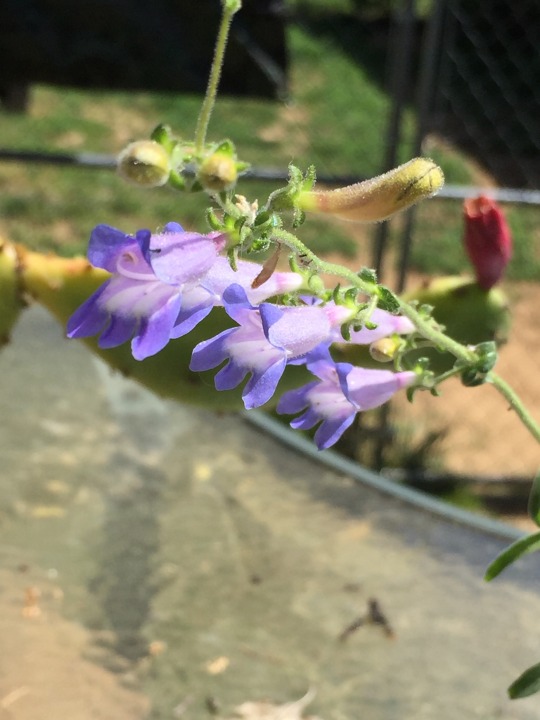
Penstemon laetus grown from locally collected seed 💜💜💜
#california native plants#wildflowers#california wildflowers#growing native plants#gardening with natives#native plants#penstemon#penstemon laetus#Sierra Nevada#habitat gardening#my plants#May#2023#blue flowers
25 notes
·
View notes
Text
"Next Monday [6/17/24] is the start of National Pollinator Awareness Week, and one Colorado advocacy group is hosting a flower planting drive to rewild Colorado’s meadows, gardens, and just maybe, its children too.
Created by constitutional amendment in 1992, Great Outdoors Colorado (GOCO) is a state-funded independent board that invests a portion of Colorado Lottery proceeds to help preserve and enhance the state’s parks, trails, wildlife, rivers, and open spaces.
This year, GOCO’s offshoot Generation Wild is distributing over 100,000 free packets of wildflower seeds to collection points at museums, Denver Parks and Rec. offices, and libraries all over the state to encourage kids and families to plant the seeds in their backyards.
The Save the Bees! initiative aims to make the state more beautiful, more ecologically diverse, and more friendly to pollinators.
According to a new report from the Colorado Department of Natural Resources, 20% of Colorado’s bumblebees are now at risk of extinction. Even in a small area like a backyard, planting wildflowers can make a positive impact on the local ecosystem and provide native bees with a healthy place to live.
“The Western Bumblebee population has declined in Colorado by 72%, and we’re calling on kids across Colorado to ‘bee’ the change,” said GOCO Executive Director Jackie Miller.
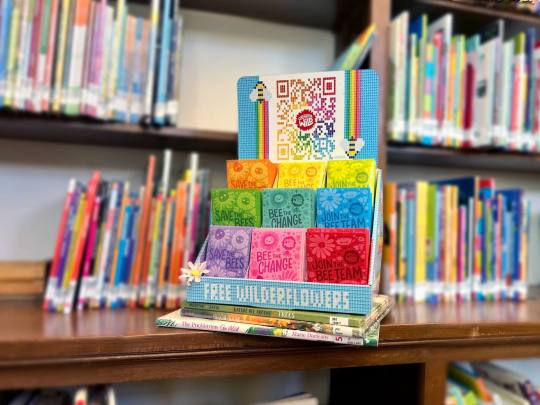
Named after Generation Wild’s official mascot “Wilder,” the Wilderflower Seed Mix was developed in partnership with Applewood Seed Co. and packets are now available for pickup at designated partner sites including more than 80 Little Free Library boxes.
By distributing 100,000 Wilderflower packets, Generation Wild is providing more than 56 million seeds for planting in every nook and cranny of the state. All seeds are regionally-native to Colorado, which is important for sustaining the living landscape of bees, birds, and other animals.
Additionally, by using flower species adapted to the Mile High climate, landscapers and gardeners need to use less water than if they were tending non-native plants.
“Applewood Seed Co. was excited to jump in and help Generation Wild identify a seed mix that is native to the Colorado region and the American West, containing a diversity of flower species to attract and support Colorado’s pollinator populations,” stated Norm Poppe, CEO of Applewood Seed Co. “We hope efforts like this continue to educate the public on pollinator conservation and the need to protect our native bees and butterflies.”
Concluding her statement Miller firmly stated that children grow up better outside, and if you or a parent you know agree with her, all the information on how to participate in Save the Bees! can be found here on their website, including a map showing all the local pickup points for the Wilderflower Seed Packets."
-via Good News Network, June 13, 2024
#wildflowers#wild flowers#colorado#bees#native bees#entomology#insects#save the bees#pollinators#bumblebees#bumble bee#i love bees#biodiversity#native plants#urban gardening#gardening#ecology#conservation#endangered species#wildlife conservation#enviromentalism#good news#hope#hope posting#solarpunk#denver#boulder colorado#colorado springs#libraries#public libraries
482 notes
·
View notes
Photo

Plant native plants, y’all!
#lawns#gardens#home and garden#gardening#native plants#ecology#environment#conservation#nature#outdoors
15K notes
·
View notes
Text
If you're in the U.S. and want to support local plants and pollinators, I hope you've heard of the Xerces Society. Weird name, but super cool resource for gardening for insect pollinators (and they work for other invertebrate species, too)
They've got regional native plant lists:
They've also got super helpful things in their resources section, including Washington's plan for helping bumble bees:
Another really cool resource is the National Wildlife Federation's list of key stone plant species by ecoregion:
3K notes
·
View notes
Text


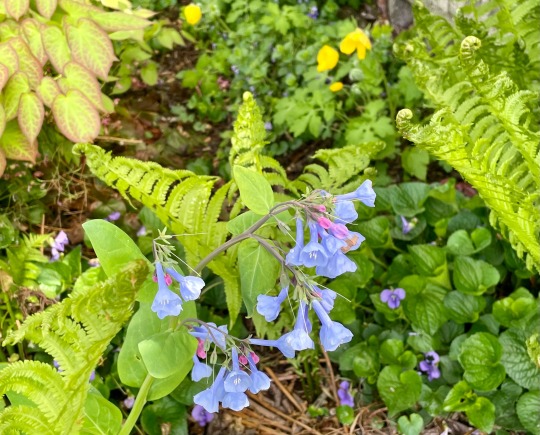





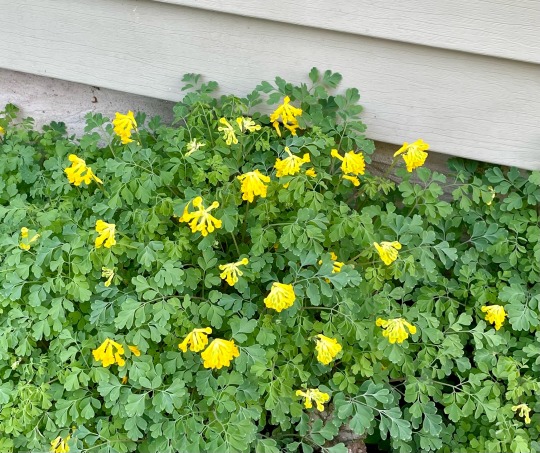
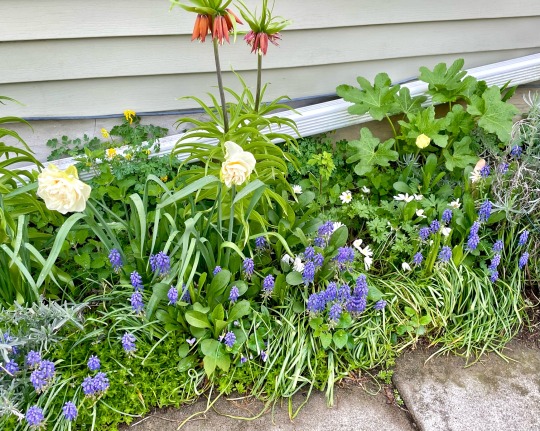
From around the garden. Some native and nonnative plants. It’s a mess and needs a lot of work but it’s bursting with life!
461 notes
·
View notes